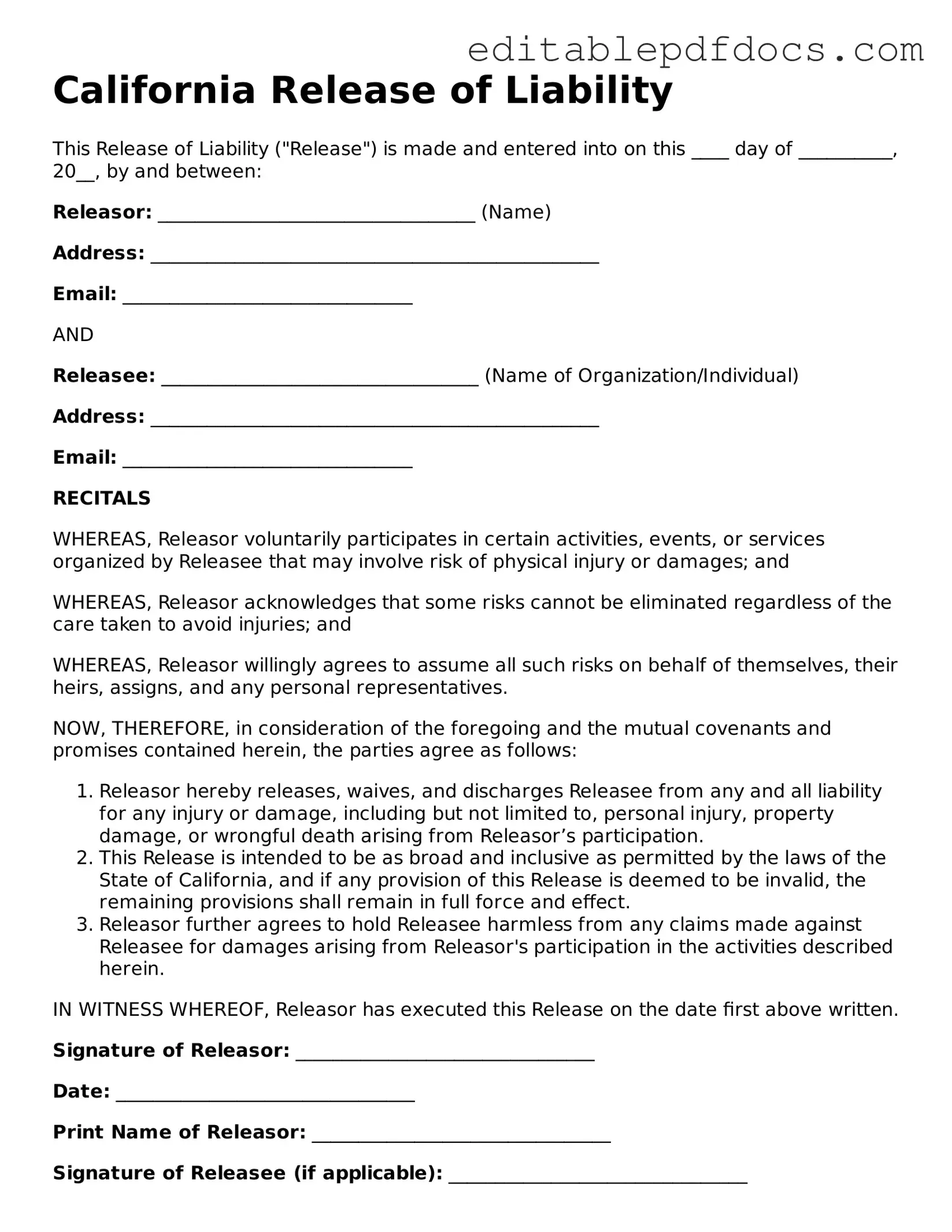In California, the Release of Liability form plays a crucial role in protecting individuals and organizations from potential legal claims arising from various activities. This document is particularly important for businesses, event organizers, and recreational facilities, as it helps to clarify the risks involved in participating in certain activities. By signing this form, participants acknowledge the inherent risks and agree not to hold the organizers liable for injuries or damages that may occur. The form typically includes essential information such as the names of the parties involved, a detailed description of the activity, and a clear statement of the risks associated with participation. It also often contains a waiver of rights, which reinforces the participant's understanding that they are giving up their right to sue for negligence or other claims. Understanding the nuances of this form can help individuals make informed decisions about their involvement in activities, while also providing a layer of protection for those organizing events or offering services.
